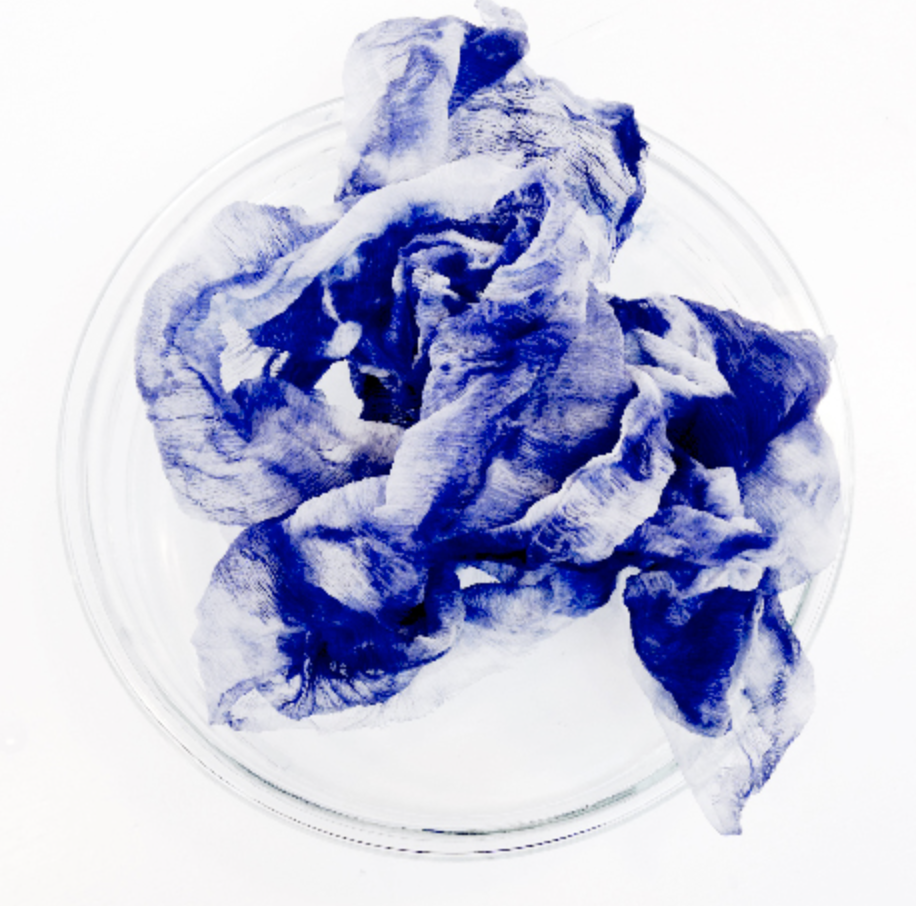The Art of Sustainability: How artists have used eco-friendly materials
As concerns around climate change and environmental sustainability grow, artists are increasingly looking for ways to create art that is both beautiful and eco-friendly. In this post, we'll explore some of the innovative sustainable art practices and materials that artists are using to create impactful and meaningful art. As the art world becomes more environmentally conscious, artists are exploring new ways to incorporate sustainable materials into their work. Here are some of the materials that artists are using to create sustainable art:
Recycled paper
Many artists are using recycled paper to create beautiful artwork. By using recycled paper, artists can reduce waste and prevent the need for new trees to be cut down. Some artists are even using recycled paper to create 3D sculptures and installations.
One example of an artist who works with recycled paper is the American artist and papermaker, May Babcock. Babcock is known for her intricate paper sculptures and installations, which are made from recycled paper. Babcock uses a variety of recycled paper sources, including junk mail, newspapers, and discarded books, in combination with other natural materials to create her artworks. She transforms the paper through a process of shredding, pulping, and forming, creating unique and textured sheets of paper that she then uses to construct her sculptures and installations.
Babcock's work often explores themes of memory, identity, and the natural world, and she uses recycled paper to create pieces that are both beautiful and environmentally conscious. By using recycled paper in her work, Babcock is able to reduce waste and promote sustainability, while also creating meaningful and impactful art.
Latent Landscape
“I set a task to take a new look at the south Louisiana landscape. The spaces most powerful were leftover, abandoned and forbidden industrial places, including an old lock, stretches of the levee along the Mississippi River, highway underpasses and chemical, energy and sugar cane processing plants. Working from observational sketches and using local materials such as river mud and plant fibres for papermaking, I made prints on handmade paper, books, and videos that bring this latent landscape into view. Images and surfaces become primitive, disorienting, psychological, dark and changing landscapes” - May Babcock
Natural dyes:
Many artists are exploring the use of natural dyes in their work as a sustainable alternative to synthetic dyes. Natural dyes are made from plant-based materials such as flowers, leaves, roots, and bark, and have been used for centuries to dye textiles and other materials. By using natural dyes, artists can create beautiful and sustainable artworks that promote environmental consciousness and reduce the negative impact of synthetic dyes on the planet and on human health.
Some of the benefits of natural dyes include:
Sustainability: Natural dyes are made from renewable resources and are biodegradable, which makes them a more sustainable choice than synthetic dyes.
Non-toxic: Natural dyes do not contain the harsh chemicals and heavy metals found in synthetic dyes, which can be harmful to the environment and to the people who work with them.
Unique colours and textures: Natural dyes can produce a wide range of colours and textures, and can create unique variations in the final product.
Some common natural dye materials include:
Indigo: Indigo is a plant-based dye that has been used for centuries to create deep blue shades. It is often used to dye denim and other fabrics.
Madder: Madder is a root that produces shades of red and orange.
Turmeric: Turmeric is a spice that can be used to create bright yellow dyes.
Cochineal: Cochineal is a small insect that produces a red dye, and has been used since ancient times to dye textiles.
Living Colour is a pioneering biodesign research project that explores the potential of using natural and sustainable methods for textile dyeing. The project focuses on using pigment-producing bacteria as an alternative to toxic textile dyes, producing biodegradable pigments that are safe for the environment and for human health.
Unlike traditional dyeing processes, Living Colour's bacterial dyeing process requires no toxic chemicals, minimal water, and low temperatures. In fact, this process could even add beneficial characteristics such as anti-bacterial properties to fabrics.
One unique method that Living Colour uses is "live dyeing," where bacteria are cultivated directly on the fabric, resulting in distinct visual growth patterns that are unique to each dye batch. While this approach is currently labour-intensive and time-consuming, it allows for truly experimental designs, as seen in collaborations with companies like PUMA and The Exploded View.
Living Colour combines traditional artisanal techniques with cutting-edge biodesign innovations, making it both highly innovative and eco-friendly. By using bacteria as a natural dye factory, Living Colour is leading the way in developing more sustainable and responsible ways to colour the world.
Reclaimed wood
Reclaimed wood is a popular choice for artists who are interested in incorporating sustainable materials into their work. Reclaimed wood is wood that has been salvaged from old buildings, bridges, or other structures that are no longer in use. By using reclaimed wood, artists are able to repurpose materials that would otherwise end up in a landfill or be burned. Reclaimed wood is not only eco-friendly, but it also adds a unique and rustic element to art pieces. The patina and weathered texture of the wood can create a one-of-a-kind aesthetic that cannot be replicated with new wood.
By using reclaimed wood, artists are able to create sustainable and meaningful works of art that honour the history and character of the materials they use. Additionally, using reclaimed wood promotes the importance of recycling and repurposing materials, reducing the waste and environmental impact of art production.
An artist who has worked extensively with reclaimed wood is Richard Long. Long is a British sculptor and land artist who is known for creating works that incorporate natural materials such as stones, mud, and wood. He often uses materials that he finds while on walks in nature, and he has created a number of works that feature reclaimed wood. He has created numerous sculptures using reclaimed wood, such as "Wood Line," which he created in 2010 by arranging a line of salvaged eucalyptus branches in a park in San Francisco.
Long's work with reclaimed wood highlights the beauty and potential of discarded materials, encouraging viewers to see the value in repurposing and reusing resources. Through his use of natural and reclaimed materials, Long creates works that not only reflect his love of nature but also emphasize the importance of sustainability and environmental consciousness.
Found objects
Found objects, also known as "readymades," are everyday objects that artists collect and repurpose in their work. These objects can include anything from discarded trash to old machine parts to vintage clothing. By incorporating found objects into their art, artists are able to give new meaning and significance to objects that might otherwise be overlooked or discarded.
Using found objects in art is often associated with the Dada art movement of the early 20th century, which sought to challenge traditional notions of art and creativity. Dada artists such as Marcel Duchamp and Man Ray used found objects to create works that were provocative, humorous, and often nonsensical. For example, Duchamp's "Fountain" (1917) was simply a porcelain urinal that he signed with a pseudonym and submitted to an art exhibition.
By using found objects, artists are able to create works that are not only visually interesting but also thought-provoking and meaningful. The use of found objects promotes the importance of recycling and repurposing materials, encouraging viewers to think about the objects they use and the impact they have on the environment and society.
Sustainable art is a growing movement that seeks to create art that is not only aesthetically pleasing but also environmentally and socially responsible. Through the use of sustainable materials such as reclaimed wood, natural dyes, and found objects, artists are able to create works that not only showcase their creativity but also raise awareness about important issues such as waste reduction, pollution, and social justice. By promoting sustainability in their art, artists are contributing to a larger movement towards a more responsible and sustainable world. As viewers, we can appreciate and support these efforts by seeking out sustainable art and considering the environmental and social impact of the art we choose to create and consume.





